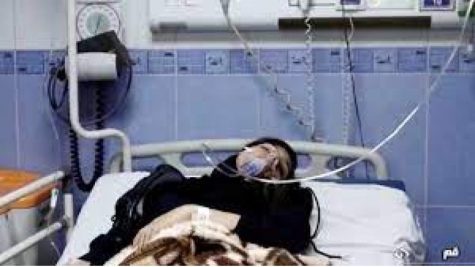Iranian Students Face Potential Gas Poisoning Attacks
April 28, 2023
 Image courtesy of Reuters
Image courtesy of Reuters
On March 11, 2023, over one hundred people were arrested for suspected involvement in the ongoing crisis involving Iranian student hospitalizations. For the past few months, many Iranian students, predominantly girls between twelve and eighteen years old, have been hospitalized with an array of critical afflictions. The Iranian government has not yet released an official statement regarding the cause of the event.
On November 30, 2022, schools in the city of Qom faced the first attack. Eighteen students were hospitalized on this day, according to Time. These outbreaks spread across the nation in the following months and have only begun to slow following the arrests. An article from Nature detailed, “Cases are being reported across the country, but especially in the capital Tehran and in Qom, which is a centre for the study of Islamic theology and philosophy.” This suggests that there are particular motives following these attacks. The Iranian ministry alleged that these rationales were forms of “‘mischief or adventurism’” and hostile motives towards the government” (Nature). Time estimates at least 26 schools have experienced these crises, and potentially thousands of students have been impacted. Image courtesy of AP News
Image courtesy of AP News
The afflicted have had an array of symptoms, ranging from “fatigue, burning throats, nausea, headaches and numbness,” according to Nature. Others report vomiting, dizziness, and loss of feeling in areas such as their arms and legs. CNN brought up a statement from a mother who has two daughters in different schools: “One girl experienced nausea, shortness of breath and numbness in her left leg and right hand while the other now had “difficulty walking”. Time reported that “at least one student, 11-year-old Fatemeh Razaei, has allegedly died”.
Many suspect these cases have been reactions from gas poisoning, in part from testimonies of girls who reported smelling weird odors, such as orange or other fruity scents, around their schools before experiencing these symptoms. Nature stated that chloramine is most likely the gas used if these statements are true. Chloramine is a chemical compound containing ammonia and chlorine. It can be used as a gas that can increase or cause respiratory problems, such as “sneezing, sinus congestion, coughing, choking, wheezing, shortness of breath and asthma”, according to the Virginia Department of Health.
Some believe these girls are being intentionally poisoned due to the protests calling for women’s rights in Iran following Mahsa Ami’s death, CNN reported. Others believe this is due to the girls’ efforts to educate themselves, which Time reiterates: “Activists have long said they believe the attacks were caused by religious groups that oppose girls’ education. Others believe the attacks are also meant to stifle young girls because of their participation in the months-long protests over the death of 22-year-old Mahsa Amini”. Some activists are even accusing the authorities and government of withholding information regarding the incidents.
 Image courtesy of Qantara.de
Image courtesy of Qantara.de
Iran’s Interior Advisor, Ahmad Vahidi, told the media on March 5 that samples of the gases were being analyzed. CNN stated, “Iran’s Supreme Leader Ali Khamenei previously called the suspected poisonings an “unforgivable crime” and called for “severe punishment” for anyone found responsible.” This means that those found guilty have the potential of facing the death penalty. Investigations are ongoing as of March 2023.
Sources:
CNN
Nature
Time
Virginia Department of Health
- middleeastmatters
- _dr.kay.1_
Tik Tok
- freedom4iran
- genzforchange
- nowthis
